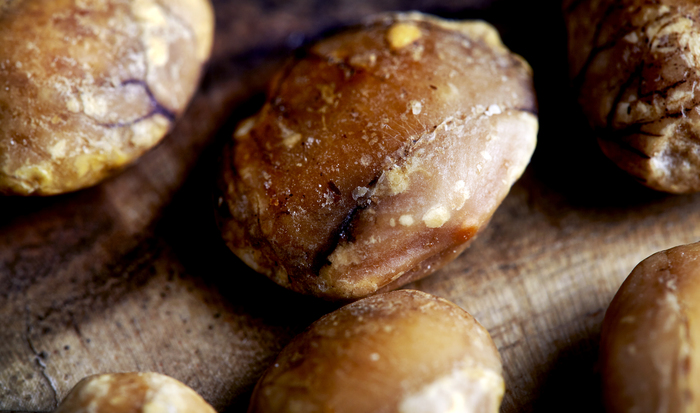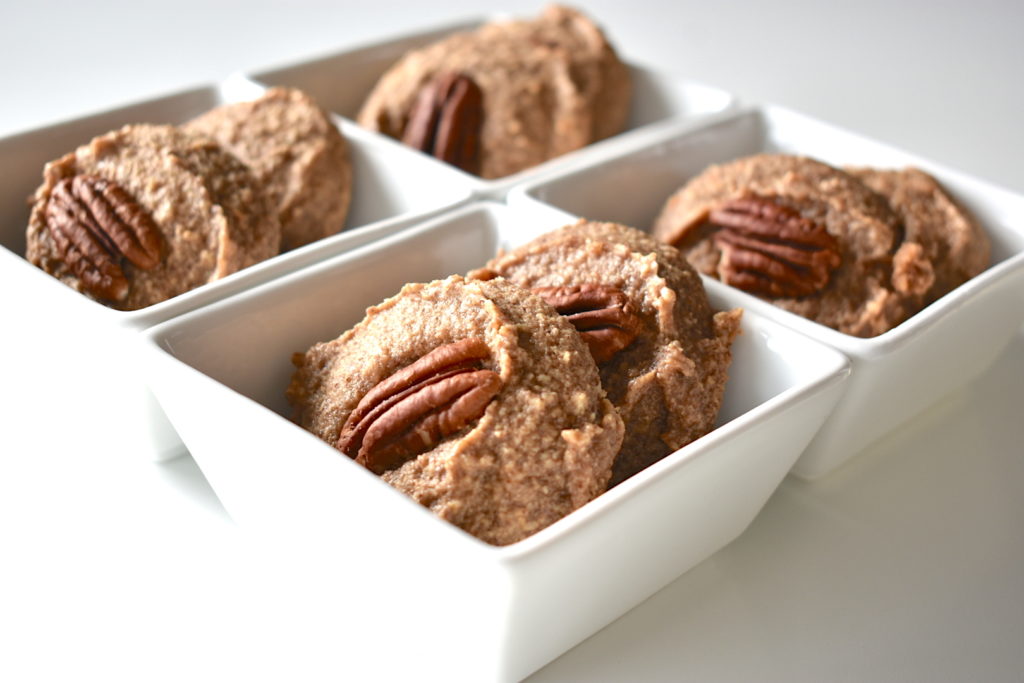
🎁 Holiday Special: SAVE 52% on the Nutrition Coach Starter Package. Limited number remaining.

🎁 Holiday Special: SAVE 52% on the Nutrition Coach Starter Package. Limited # left.

Inca seeds, also known as sacha inchi seeds or Inca peanuts, are native to the tropical regions of South America and were once an important source of nutrition for indigenous cultures of these regions. Because of their growing popularity, commercial crops are also now grown in Thailand. Inca seeds are about the size of a macadamia nut, except they are oval-shaped and tan colored. They have a robust nutty flavor and a crunchy, rich texture. Inca seeds are generally only found roasted, as they are unpalatable raw. Nutritionally, Inca seeds are rich in protein and healthy fats and are also a good source of vitamin E. Though they are often referred to as nuts, the Inca seed is borne from a fruit, so indeed, is a seed.
Cause a stir next time you have a party: Forget putting out a bowl of peanuts or even a more exotic offering like a “deluxe party nut mix” — and break out some Inca seeds.
Your friends will be both impressed and confused — chances are, they’ve never seen or even heard of this crunchy South American jewel.
Inca seeds, also known as sacha inchi seeds or Inca peanuts, grow in tropical regions of South America such as Ecuador, Peru, Colombia, Bolivia, Venezuela, and Suriname. Commercial crops are also now grown in Thailand. Because of their high fat and protein content, Inca seeds were an important source of nutrition for indigenous cultures of these regions.
Inca seeds come from star-shaped fruit that grow on medium-sized plants with heart-shaped leaves. The seeds come encapsulated in a shell and must be roasted in order to be made palatable. One plant can bear over a thousand seeds every year.
Though they are often referred to as nuts, the Inca seed is, indeed, a seed.
Inca seeds are about the size of a macadamia nut, except they are oval-shaped and tan colored.
The seeds are crunchy, oily, and rich, with a robust nutty flavor that is a cross between a peanut and a roasted chickpea. Inca seeds are generally only found roasted — often salted too, and sometimes even covered in chocolate! They are unpalatable raw.
One ounce of Inca seeds (about 30g) contains 170 calories, 9g of protein, 4g of carbohydrates, 6g of fiber, and 14g of fat (mostly in the form of Omega 3 and 6 fatty acids).
Inca seeds are rich in vitamin E and are also a good source of minerals such as calcium and iodine.
Inca seeds are also known for their high content of tryptophan, an amino acid that can help promote a positive mood.
While Inca seeds are gaining popularity in North America, they aren’t widely available in most grocery stores. They can, however, be found in many natural food stores, or online.
Inca seeds are usually sold roasted and salted, although you may find them unsalted, salted and flavored, or covered in chocolate. Inca seed powder or oil is sometimes also used in protein powder, protein bars, or other snacks.
Read the ingredients when buying Inca seeds to ensure you’re getting a good quality, wholesome product. Generally, the fewer ingredients the better.
Because of their high concentration of omega 3 fats, Inca seeds are prone to rancidity. If you detect a bitter or musty flavor in your product, toss it.
Store Inca seeds in an airtight container in a cool, dry, dark place such as the fridge or freezer.
Even so, because Inca seeds are so vulnerable to rancidity, they should be eaten within a couple of months, depending on how fresh they were when you purchased them. A bitter flavor will tell you they are past their prime and should be discarded.
Because they are typically sold shelled and roasted, Inca nuts are ready to be eaten without any special preparation needed.
Have them as a snack on their own, or add them to salads, stir-fries, oatmeal, or baked goods.

These cookies are soft, sweet, and absolutely delicious. Their nutty flavor combined with the maple and a hint of cinnamon make for a treat to be desired.
Prep Time: 10 minutes Cook Time: 20 minutes Yield: 30 small to medium sized cookies
Put all ingredients into your high-powered blender or food processor and blend until very smooth. (Note that the batter will be fairly thick. If you do not have a high-powered blender or food processor, blend all ingredients with the exception of the flour. Once very well blended, transfer ingredients to a large bowl, add flour, and mix until well combined.)
Line two cookie sheets with parchment paper. Using a spoon or small ice cream scoop, scoop the batter onto the cookie sheets. Top cookies with pecans if desired.
Bake in preheated 350 degrees Fahrenheit oven for about 20 minutes. The cookies will look very soft and slightly underbaked at the 20-minute mark. Pull them out of the oven and let them cool. They will set up as they cool.
Store in fridge.
Enjoy!
Precision Nutrition’s Encyclopedia of Food expands every single month as we highlight new foods and showcase beautiful food photography. If you’d like to stay up to date, simply click this link. From there, we’ll send you a FREE copy of our recipe book. We’ll also let you know when new and delicious foods are added to the site.
Inca seeds, also known as sacha inchi seeds or Inca peanuts, are native to the tropical regions of South America and were once an important source of nutrition for indigenous cultures of these regions. Because of their growing popularity, commercial crops are also now grown in Thailand. Inca seeds are about the size of a macadamia nut, except they are oval-shaped and tan colored. They have a robust nutty flavor and a crunchy, rich texture. Inca seeds are generally only found roasted, as they are unpalatable raw. Nutritionally, Inca seeds are rich in protein and healthy fats and are also a good source of vitamin E. Though they are often referred to as nuts, the Inca seed is borne from a fruit, so indeed, is a seed.